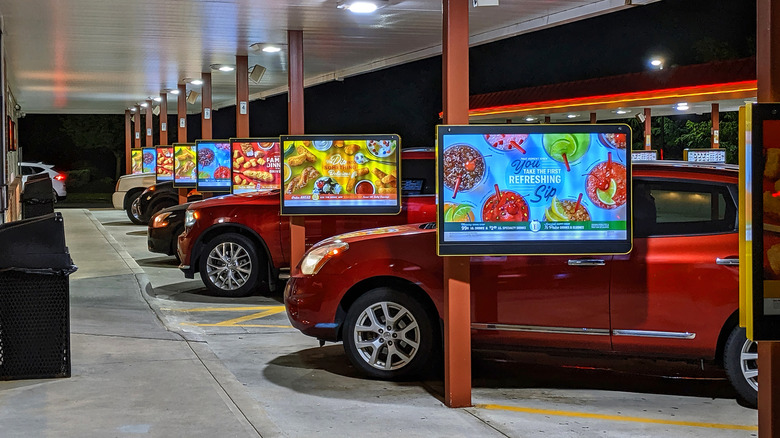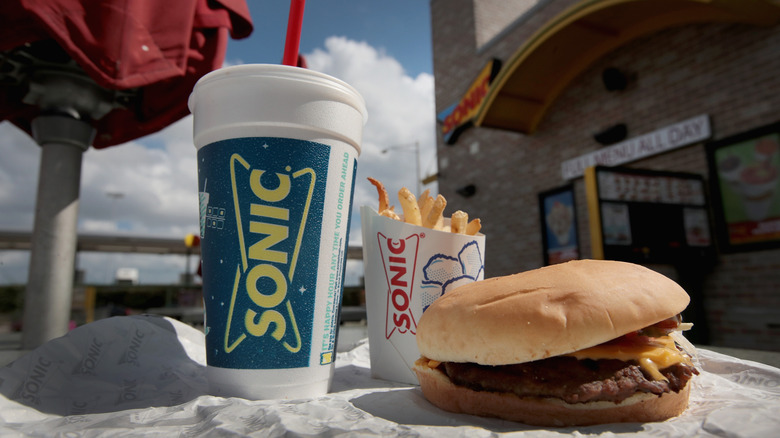How Sonic Became The Drive-In Fast Food Chain We Know And Love
There's something about a drive-in institution that just feels cozy and fun. Drive-in movies and restaurants alike conjure "American Graffiti"-esque images of nostalgic days of yore, transforming pedestrian moments into capital-E Experiences. Nowhere captures that feeling quite like Sonic — the restaurant now probably best known for its commercials, aesthetics, and, strangely enough, its popular ice nuggets.
But while you've undoubtedly seen the ads, you might be curious about how the restaurant came to be — and how it has maintained relevance over the years while competitors folded, with most companies shifting their focus from drive-ins to drive-thrus. The story begins in Shawnee, Oklahoma, a small city with a population of just over 31,000 in 2023 (per Data USA), where Sonic was founded in 1953.
Founder Troy Smith first introduced the world to Sonic under the name Top Hat, a burger joint launched in an abandoned root beer stand. He drew inspiration from food stalls he encountered while traveling and outfitted the restaurant with homemade intercom speakers that allowed customers to order from their cars. Top Hat's burgers — served with a top hat-topped toothpick — were a success, and the restaurant began to grow. But Smith's dreams of expansion hit a roadblock when he discovered that the name Top Hat was copyrighted by another restaurant. Then inspiration struck: a slogan that echoed the spirit of the space race — "Service with the speed of sound." From there, the name Sonic became almost inevitable.
From Top Hat to Sonic and beyond
In 1959, Top Hat officially became Sonic, and a burger and advertising legend was born. Over the next 14 years, the company grew to 125 locations. By 1978, Sonic was operating 1,000 drive-in restaurants, most of them located in Oklahoma, Texas, Kansas, and Arkansas. Midwest City, Oklahoma, earned the distinction of hosting the 1,000th location.
But perhaps Sonic's most interesting move came in the 1980s, when the chain allowed individual franchises to operate independently, offering different menu items and prices tailored to regional tastes. This model lasted until 1995, when leadership began an effort to unify the brand and establish a consistent menu and identity. Out went the slaw dogs — in came the unforgettable fast food milkshakes. This restructuring paved the way for the Sonic we know today: bright, "Jetsons"-style aesthetics, a sense of playful wonder in its advertising, and a killer lineup of beverages, from the aforementioned milkshakes to one of America's favorite secret fast food menu items — mermaid water.
As of April 2025, there are 3,500 Sonic locations nationwide, making it the largest drive-in chain in the country (per B+E). And while the company has evolved many times over the decades, those looking for a slice of history with their hot dog can still visit the original Stillwater location, see the original sign, and snap a photo next to a statue of the company's first branch manager, Gene Longworth.


